2019 Office Utilization and Workspace Engagement Report
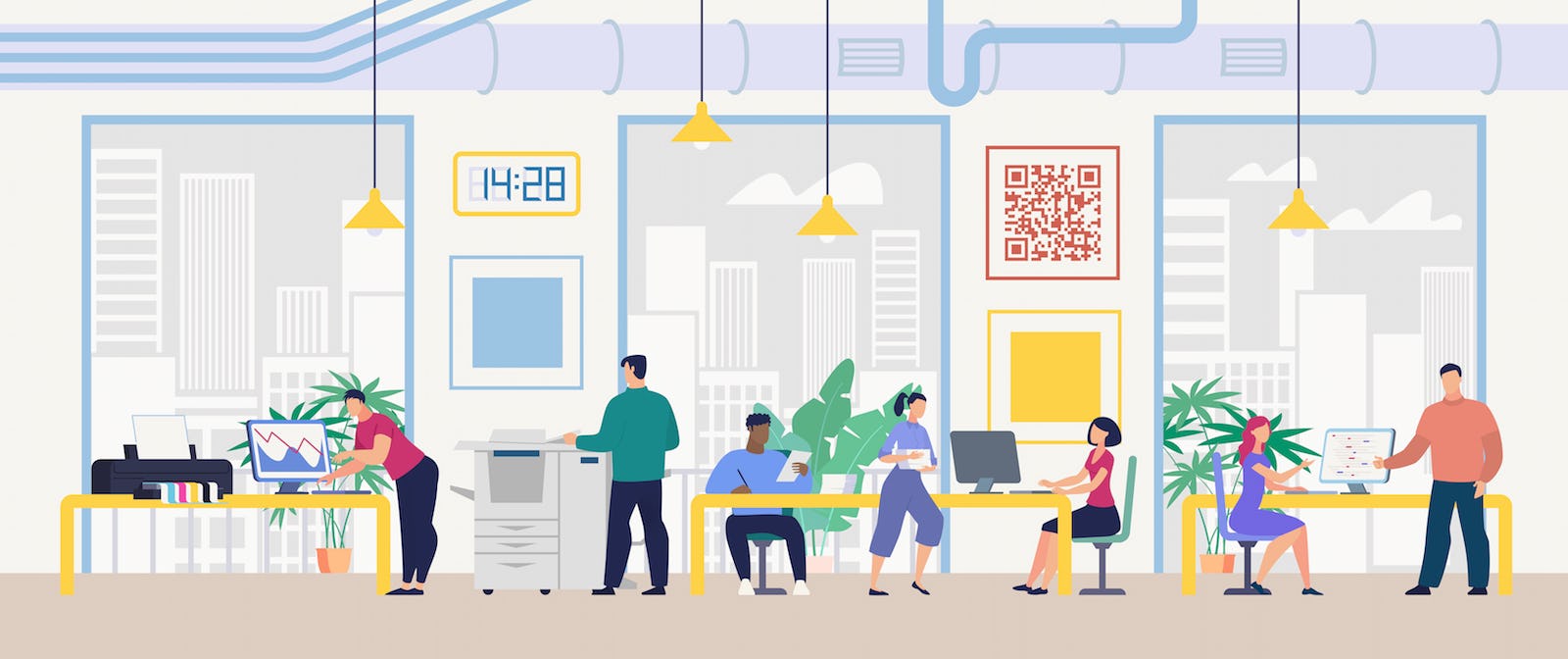
VergeSense is the industry leader in providing enterprises with a true understanding of their occupancy and how their offices are actually being used.
2019 was another year of evolution within the CRE industry when it comes to the utilization of corporate workspaces. While WeWork drew negative proptech headlines, the rest of the industry continued to push towards new usages of open office designs.
Legacy open office concepts continue to be replaced by agile or dynamic working, which takes the set desk out of the open office concept. Rather than having a set desk within a wide-open workplace environment, workers today have increasing freedom and flexibility to work in different areas of an office through hot-desking and different shared spaces.
However, despite this shift, office space and property managers are still struggling to maximize the use of corporate workspaces. In 2018, VergeSense found that the average utilization rate for an office was 40%.
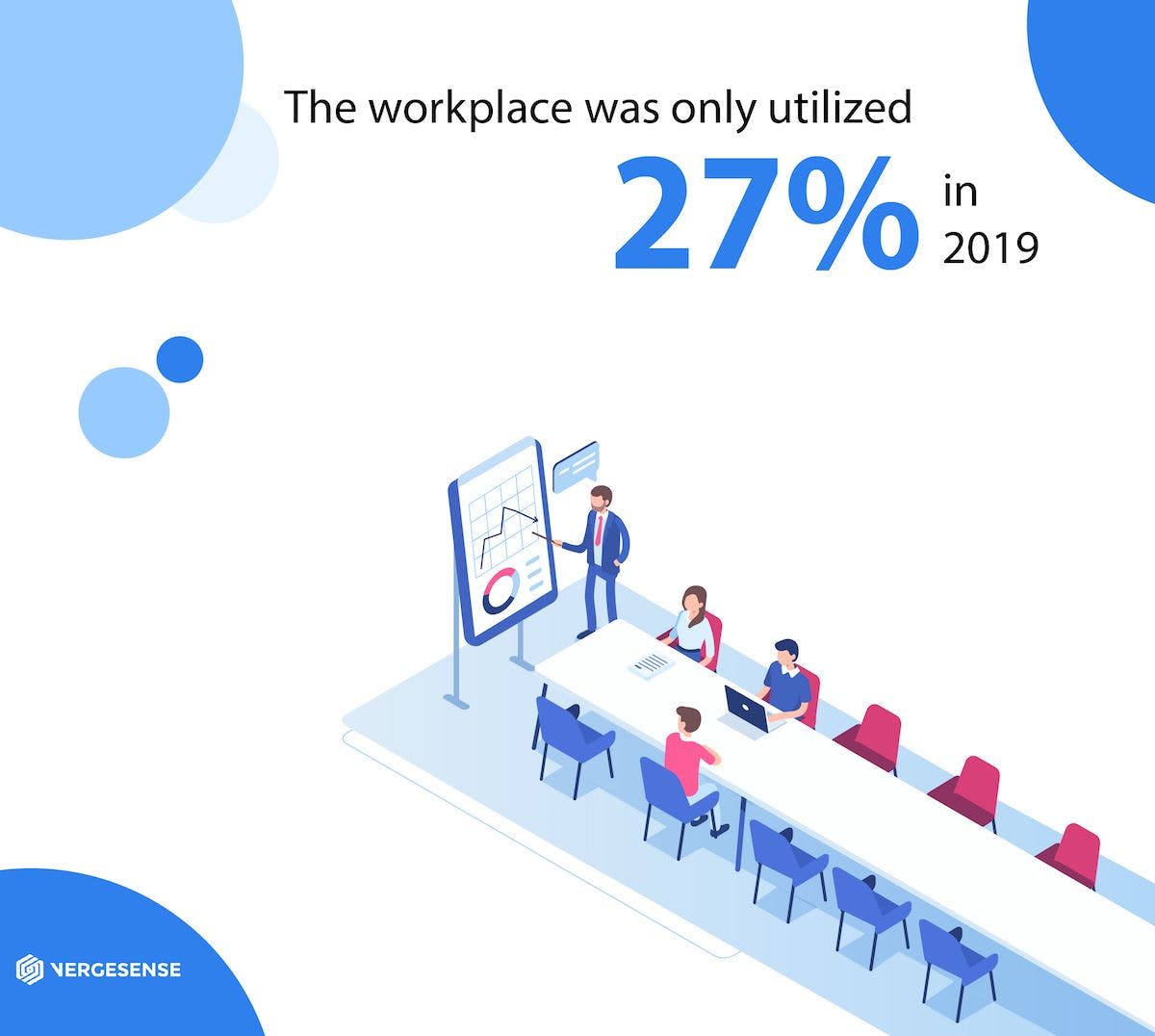
The 2019 VergeSense Office Utilization and Workspace Engagement Report found that figure dropped to 27% this year, based on data collected by the VergeSense sensor-as-a-service platform across 10 million square feet of workspace.
Increasing remote work, virtual teams, and co-working have certainly played a role in the decrease of office utilization rates. This problem is combated by legacy office designs not being able to support modern work environments such as activity-based working.
As we approach the end of another work year, VergeSense has curated a round of workplace data based on its 10 million square footage of coverage, and over 2.5 million meetings held across the office space it provides real-time data on, to illustrate how the office was utilized and engaged with by workers in 2019.
Here’s what we found:
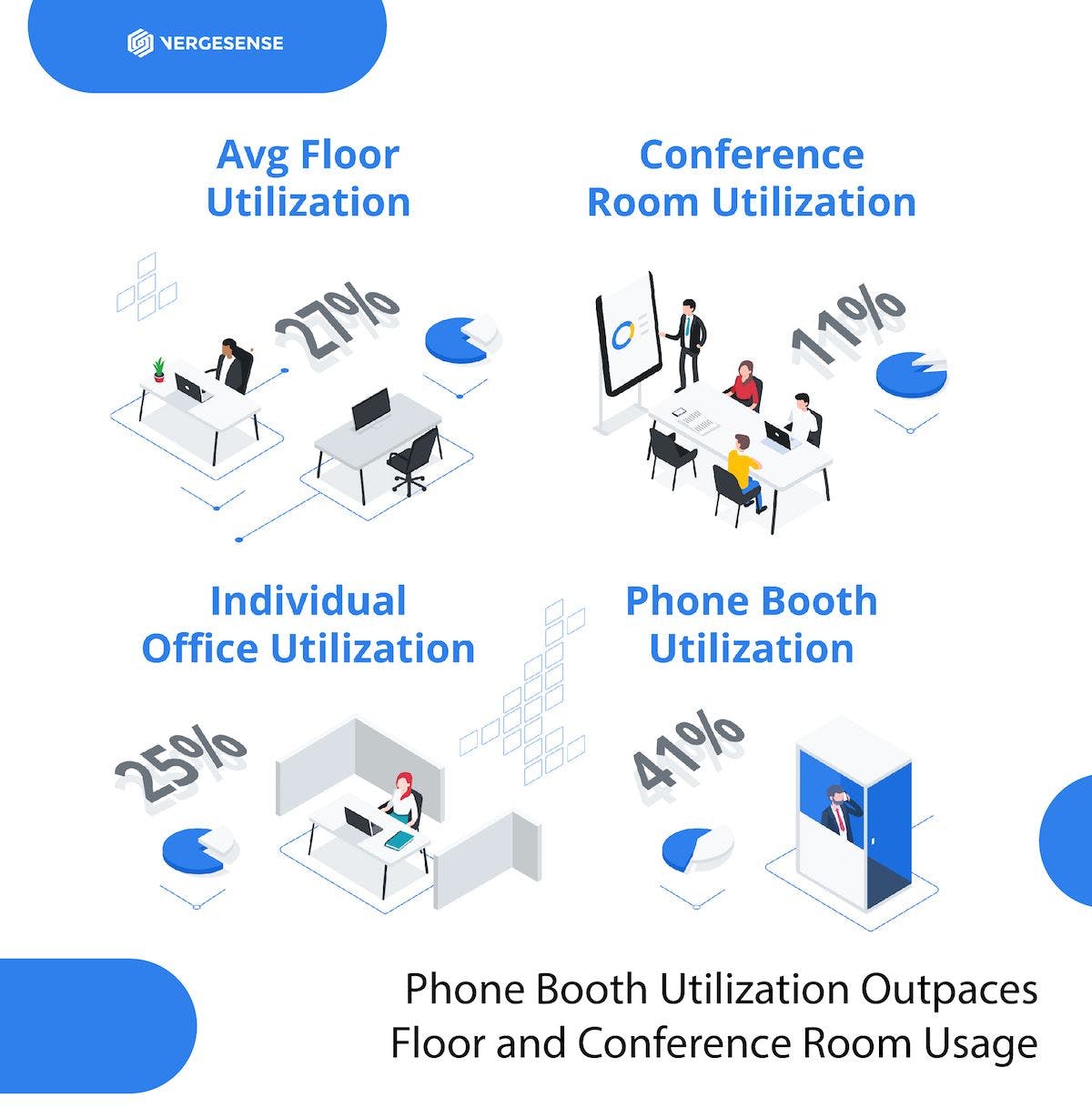
While the average utilization rate of office space dropped to 27%, peak usage for office spaces hovers around three-quarters (72%) utilized. That means that even when most offices are at peak activity levels, there is still a considerable amount of room for utilization improvement. Only those organizations embracing more nimble and flexible workspace driven by real-time data will be able to approach maximum office space utilization.
Meanwhile, conference rooms and individual offices continue to be poorly utilized. The average conference room was only utilized 11% of the time. This data seems to echo data VergeSense uncovered last year that suggested 30% of all conference room bookings end up in no-shows. Furthermore, it’s a broader illustration that most office spaces have an overabundance of conference room space designed for large groups of people versus smaller conference rooms that are now in growing demand.
In fact, according to VergeSense data, 6-person conference rooms were the highest utilized in 2019 (14%) while larger 8-person (9%) and 14-person conference rooms (6%) were less utilized.
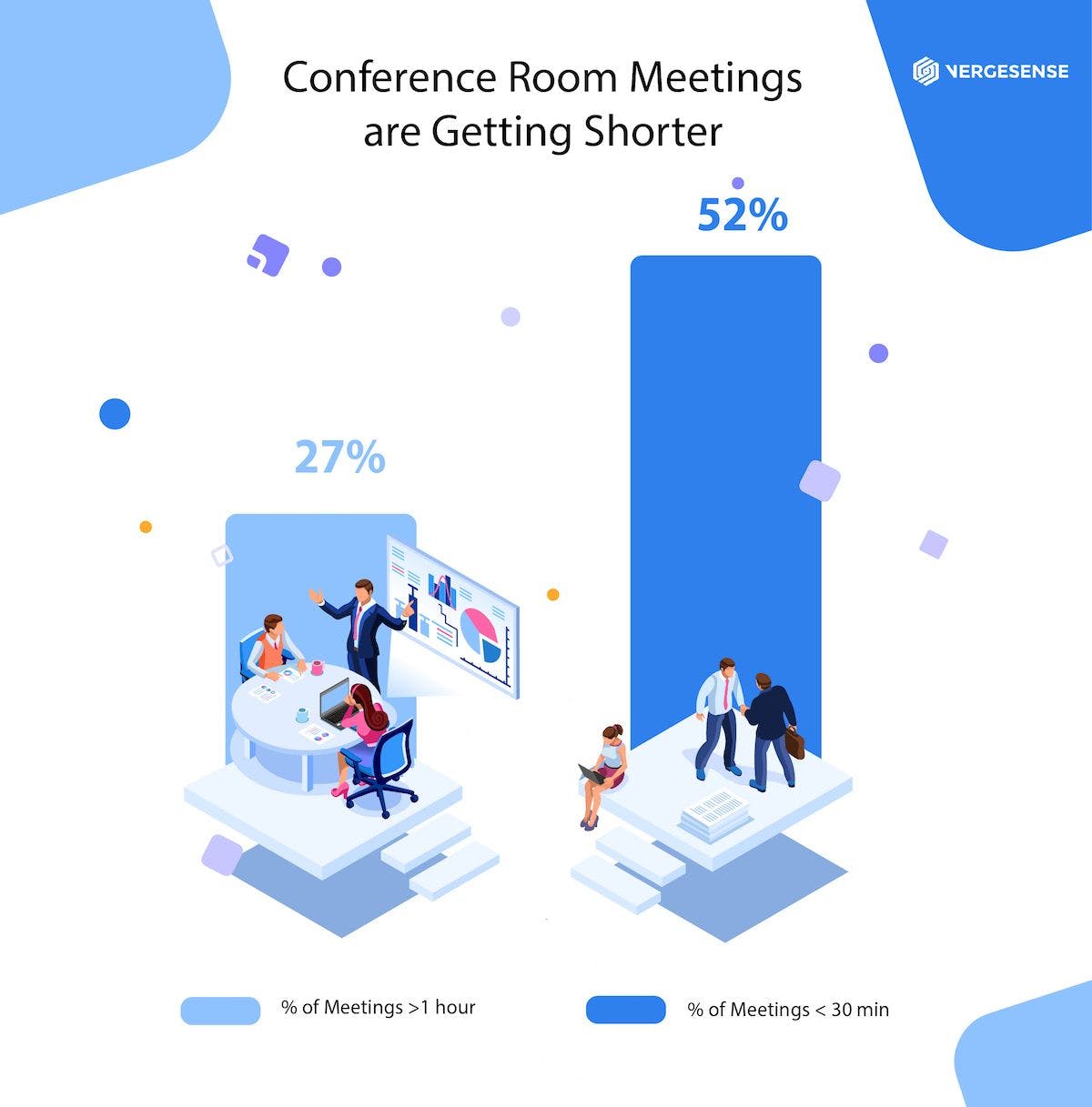
Over Half of All Office Meetings Last Less Than Half An Hour
Perhaps unsurprising to those of us who have been stuck in one-too-many meetings that could have just been an email, 52% of conference room meetings actually lasted less than 30 minutes. That’s compared to 27% of meetings that lasted an hour or longer.
Over the last couple of years, research has supported the idea of shorter meetings, ideating that shorter, yet more focused and productive meetings, pack more of an impactful punch. Perhaps one of the reasons shorter meetings are trending is because they require a level of planning and preparation in order to stay on a time track and execute what’s required.
There’s also the issue of how much money meetings are costing companies. According to a 2019 report on the state of meetings, the cost of “poorly organized meetings” was projected to be $399 billion. That’s a lot of money owed to poorly planned, drawn-out meetings and supports the thought that the quality of a shorter meeting is better than the quantity of unproductive minutes.
Want to encourage shorter meetings at your office? Past research from JLL has suggested ditching conference room chairs. Shorter, standing meetings outperform long sit-down conversations according to their findings. Furthermore, chair-less spaces give people the opportunity to move around and get the creative juices flowing.
Better yet? Forward-looking organizations are ditching conference rooms altogether and moving towards open collaboration spaces that can be adjusted and used in a variety of ways to meet the needs of more employees.
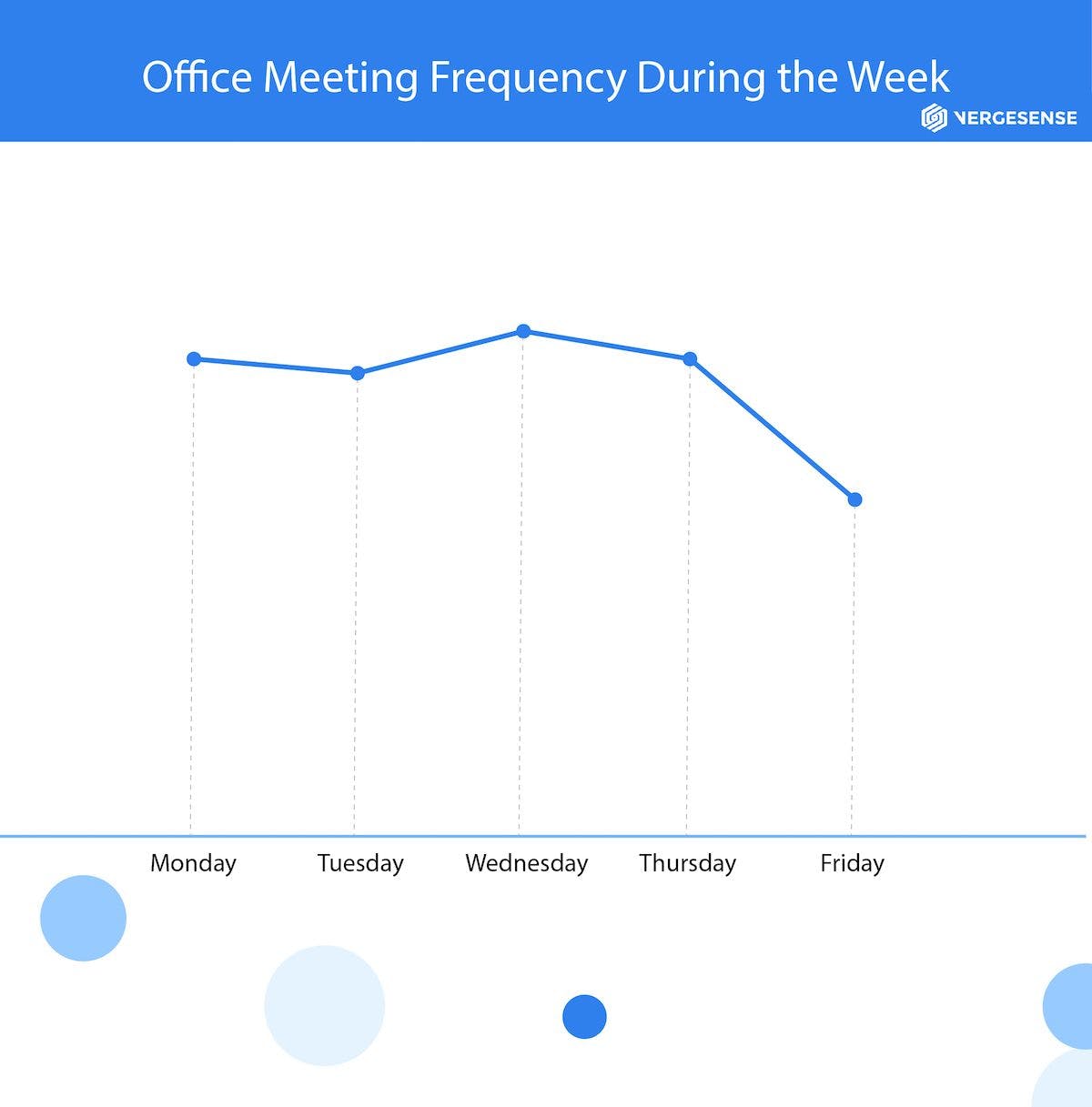
Hump Day is the Most Popular Day For Office Meetings to Occur
By the sheer number of those that are scheduled, Wednesdays are the most popular day for meetings and office use. As this is seen as the most neutral day of the week (not as stressful as a Monday, but not as carefree as a Friday), we can guess that holding meetings in the middle of the week is strategic.
Wednesdays, however, are followed closely by Mondays, especially for those looking to get status updates or get prepared for the current work week.
Lunch hour (noontime) is protected, as the most popular times for meetings were at 11 am and 1 pm, followed by 3 pm on Fridays, which we can only guess is the best time of the week to segue a meeting into a work happy hour? After all, Friday’s are the least likely day for most employees to be utilizing the workspace.
Over 1-in-10 Workspace Bookings Inaccurately Assign Space Being Used
In 2019 VergeSense also launched a new machine learning capability that allows its sensors to report true occupancy within buildings and office spaces by analyzing both people counts and signs of working.
Called “TrueOccupancy”, this update utilizes computer vision technology to factor employee items into the workplace utilization equation. For example, it can pick up a coat on a chair in a conference room, a laptop messenger bag strewn across a hotdesk, or even a coffee mug left alongside a scanner.
Based on data collected through this new feature, VergeSense found that 1-in-10 meeting spaces on average are being passively utilized without being properly booked. That means that without VergeSense’s newest feature, workers would be erroneously assigned a meeting room as available only to find out it was actually being used upon their arrival about 10% of the time.
While this may seem like a small problem, if it’s taking place within an office housing thousands of employees across a million square feet of space, it becomes a major work efficiency problem!